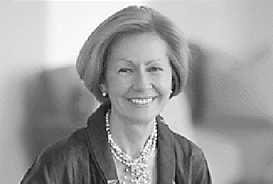
Ah, French women. They have it all. Style, sophistication, supple yet svelte figures—and more brie and pastries than you can shake a baguette at. Confounding, n’est pas?
Not so, says Mireille Guiliano, in her bestselling “anti-diet” book, French Women Don’t Get Fat. It’s just a matter of employing “a balanced and time-tested relationship to food and life.” According to Guiliano, “By learning and practicing the way French women traditionally think and act in relation to food and life,” most anyone can reach an optimal weight—and develop a more sensual and fulfilling relationship with food.
Guiliano, the lithe president and CEO of wine and champagne importers Clicquot, Inc., must know from whence she speaks. Her job requires her to consume sumptuous restaurant entrées, desserts, and bubbly about 300 times a year, yet she stays slim, like the vast majority of French women. Their secret? It’s a state of mind.
“French women take pleasure in staying thin by eating well, while Americans typically see it as a conflict and obsess over it,” writes Guiliano. She may have a case.
Does any American woman you know obsess over a taboo food item like, say, chocolate? Does said woman Puritanically deprive herself of the coveted cocoa bean for periods of time and then break down and take guilty, orgiastic delight in consuming vast quantities of it? Mm-hm.
Consider the statistics. Most Americans “comfort eat,” consuming at least 10 to 30 percent more food than they actually require. Sixty-five percent of Americans are overweight. Diet books rake in billions of U.S. dollars each year, selling like the hotcakes Americans obviously consume too many of–and then regret.
“Deprivation is the mother of failure,” writes Guiliano, who espouses a more sensual and celebratory attitude towards food. “Be the master of your pleasures as well as of your restraint.”
French Women Don’t Get Fat presents a comprehensive approach to sensible living and eating, complete with helpful strategies, tips, and easy recipes. Guiliano also offers a four-phase path to establishing one’s ideal weight.
Phase One: Wake-up Call
Take an old-fashioned three-week inventory of your meals.
Phase Two: Recasting
Delve into French Eating 101. Learn about ideal portions and diversity of nourishment. Identify and temporarily suspend key food “offenders” in your diet.
Phase Three: Stabilization
You’ve reset your equilibrium, so now you can start increasing your indulgences while you continue to slim down.
Phase Four: The Rest of Your Life
You’re at your target weight, so have fun fine-tuning your relationship with food.
The book is more than just a practical guide to weight loss, though. It’s also a sumptuous tour of French food, culture, and history.
You’ll find yourself in sun-warmed Provencal fields, picking plums off branches, and in a French marché sampling olives and fresh herbs. You’ll also glean epicurean wisdom from Guiliano’s savvy about famed French foods such as bread, pastries, wine, and champagne.
The author’s tone is conversational, elegant, intimate, and authoritative. She peppers her text with French words and phrases, such as la pomme d’amour—who but the French would nickname the tomato the “apple of love? As you read, you can almost imagine Guiliano sitting opposite you, marvelously perfumed, wine glass in hand, leaning forward with womanly confidence.
Personal favorites for me are the sections where Guiliano waxes poetic about the “almost ecstatic enjoyment” that comes from eating chocolate (French women eat an average of 12 pounds of the stuff per year). She describes the delicious confection in a manner so sensual it borders on erotic: “. . . that burst of delicate flavors, that supreme smoothness of texture as it melts in your mouth and begins its way down your throat.” As she herself is eager to admit, “For the French, the sex appeal of eating is second nature.”
In French Women, Guiliano projects herself as a woman bien dans sa peau (literally, comfortable in her own skin), and she encourages readers to establish a relationship with food—and themselves—that allows them to feel the same. A lot of her tips are just plain common sense.
On Variety:
“Gastronomic boredom leads to lots of unhealthy eating. If you don’t make improvisation and experimentation part of your eating life, you are sure to find yourself in an eating rut. It’s as bad as a romantic rut—losing that spark—and just as likely to get you in trouble!”
On Ritual Eating:
“Eat only at the table, only sitting down… Eat slowly, chew properly… Do not watch television or read the paper.”
On Portion Control:
“Cut back gently, especially if your problem is too much of a good thing. Salmon is a wonderful health food, but if you need half a pound to feel content, you need too much.”
The book is also crammed with delicious recipes that are both sensual and smart. Asparagus flan, cooked pears with cinnamon, tomato salad with goat cheese, chocolate mousse—these are just a few of Guiliano’s incredible edibles.
Unassuming and modest, Guiliano takes care not to present herself as any sort of physician, psychologist, nutritionalist, or “It” Diet Guru. On her website, she writes, “I certainly don’t take myself all that seriously or claim to be anything that I am not. I am happy to share slices of a rewarding lifestyle if it gives people pleasure.”
Pleasure-management seems to be the underlying theme in the French Women philosophy. Have your gateau and mange it, too—just don’t scarf down three slices! In her manner-of-fact tone, Mireille assures, “nothing is sinfully delicious. If you really adore something, there’s a place for it in your life.”
So there it is. A simple formula for a life of “blissful indulgence.” As Mireille would say, Bon courage, bonne chance, and bon appétit!
